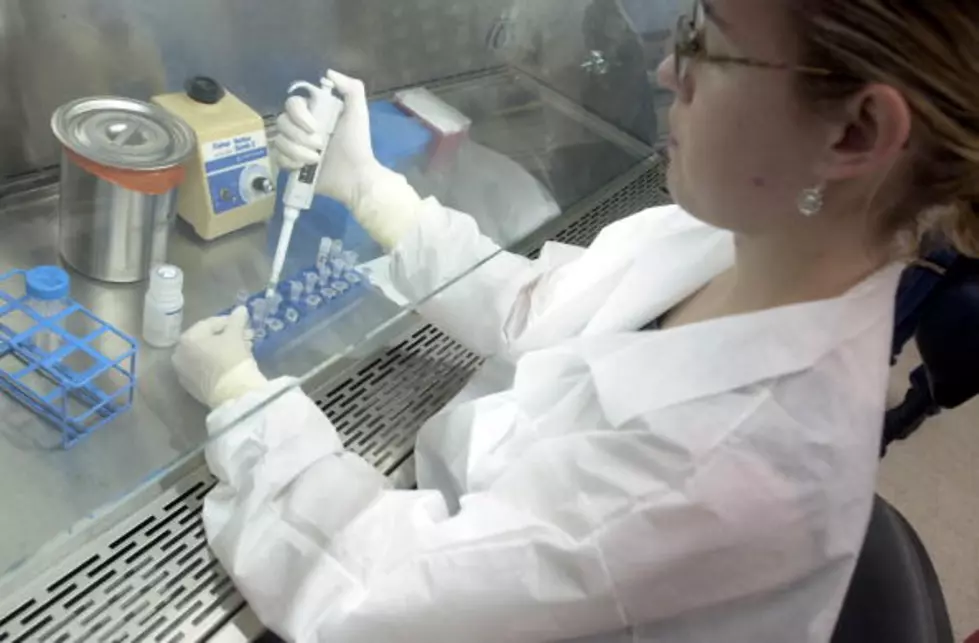
Michigan Confirms First Case of Chronic Wasting Disease in Free-Ranging Deer
The Michigan DNR and Michigan Department of Agriculture and Rural Development today confirmed that a free-ranging deer in Meridian Township near Lansing has tested positive for chronic wasting disease (CWD).
CWD is a fatal neurological disease that affects white-tailed deer, mule deer, elk and moose. This is the first time the disease has been found in Michigan’s free-ranging deer population.
In 2008, a white-tailed deer from a privately owned facility in Kent County tested positive for CWD, but this is a first for deer in the wild in Michigan.
The animal was seen last month near a Meridian Township home and appeared to be sick. The homeowner contacted the Meridian Township Police Department, who then sent an officer to euthanize the animal.
The deer was collected by a DNR wildlife biologist and delivered for initial testing to the DNR Wildlife Disease Laboratory at the Michigan State University Diagnostic Center for Population and Animal Health in Lansing. After initial tests were positive, samples were forwarded to the U.S. Department of Agriculture’s National Veterinary Services Laboratory in Ames, Iowa, for final confirmation which was received last week.
Chronic wasting disease first was identified in 1967 as a clinical disease in captive mule deer at the Colorado Division of Wildlife Foothills Wildlife Research Facility in Fort Collins, Colorado. Since then, most CWD cases have occurred in western states, but in the past 15 years it has spread to some midwestern and eastern states.
In Michigan, from 1998 - 2014, 34,207 free-ranging deer, 1,607 elk and 70 moose in Michigan were tested with no sign of CWD. Approximately 21,000 privately-owned deer samples have been tested for CWD. All have been negative, with the exception of one case in 2008 in Kent County.
The disease is caused by the transmission of infectious, self-multiplying proteins (prions) contained in saliva and other body fluids of infected animals. Susceptible animals can acquire CWD by direct exposure to these fluids or from environments contaminated with these fluids or the carcass of a diseased animal. Once contaminated, research shows that soil can remain a source of infection for long periods of time, making CWD a particularly difficult disease to eradicate.
Some chronically CWD-infected animals will display abnormal behaviors, progressive weight loss and physical debilitation. There is no cure; once a deer is infected with CWD, it will die.
To date, there is no evidence that chronic wasting disease presents any risk to non-cervids, including humans, either through contact with an infected animal or from handling contaminated venison. However, as a precaution, the U.S. Centers for Disease Control and the World Health Organization recommend that infected animals not be consumed as food by either humans or domestic animals.
“While it is a disappointing day for Michigan, the good news is that we are armed with a thoughtfully crafted response plan,” DNR Director Keith Creagh said. “We are working with other wildlife experts at the local, regional, state and federal level, using every available resource, to determine the extent of this disease, respond appropriately to limit further transmission, and ultimately eradicate the disease in Michigan if possible.”
“The Michigan Department of Agriculture and Rural Development is working with the state’s privately owned cervid facilities within a 15-mile surveillance zone to ensure compliance with CWD testing requirements,” said MDARD State Veterinarian James Averill.
Michigan's surveillance and response plan for chronic wasting disease was developed in 2002 and updated in 2012. According to the plan, the DNR will respond to the discovery of a CWD positive deer by:
- Completing a population survey in the area where the CWD-positive deer was found.
- Establishing a Core CWD Area consisting of Alaiedon, Delhi, Lansing, Meridian, Wheatfield and Williamstown townships in Ingham County; Bath and DeWitt townships in Clinton County; and Woodhull Township in Shiawassee County. Unlimited antlerless deer hunting licenses will be available. Mandatory checking of deer will be required in this area during hunting seasons and restrictions will apply to the movement of carcasses and parts of deer taken in this area.
- Creating a CWD Management Zone, which will include Clinton, Ingham and Shiawassee counties.
- Implementing a deer and elk feeding and baiting ban, which will include the Core CWD Area and the larger three-county CWD Management Zone.
- Prohibiting the possession or salvage of deer killed by collision with a motor vehicle within the Core CWD Area. Also, residents are asked to call in the locations of road-killed deer within this area so DNR staff can pick up for testing. Research shows CWD-infected deer are more likely to be hit by vehicles because of their illness.
The DNR is asking for help from the public and hunters in reporting deer that are:
- Unusually thin.
- Exhibiting unusual behavior (for example, acting tame around humans and allowing someone to approach).
To report a suspicious-looking deer, call the DNR Wildlife Disease Lab at 517-336-5030 or fill out an online observation report.
Once the DNR has conducted targeted surveillance in the CWD Management Zone, staff will have a better understanding of any needed changes in hunting regulations for upcoming deer hunting seasons.
More From 100.5 FM The River









